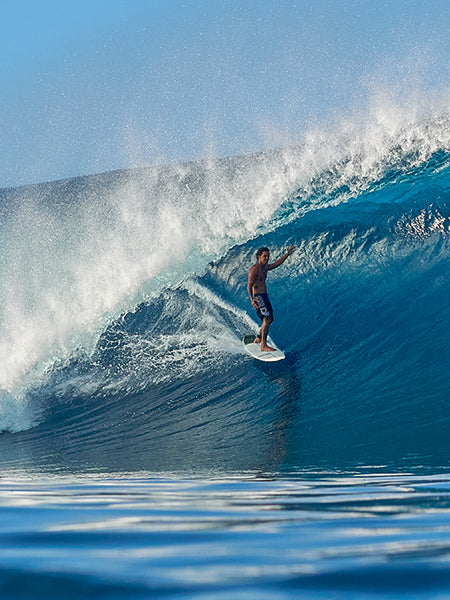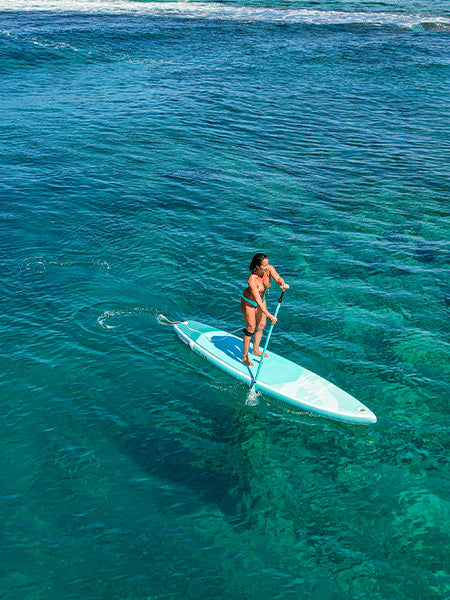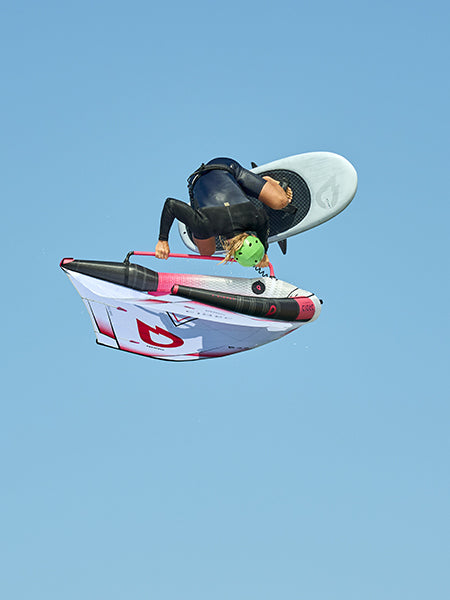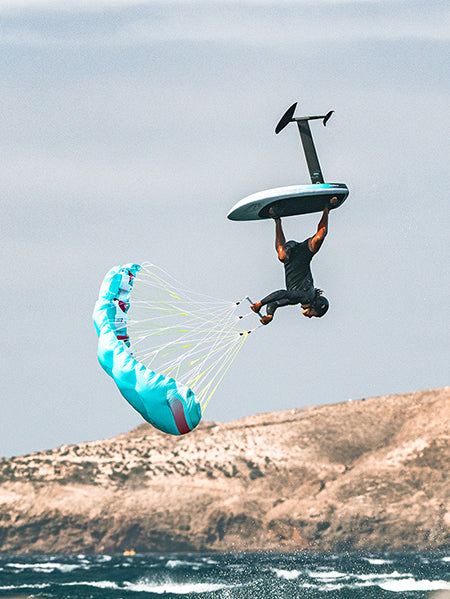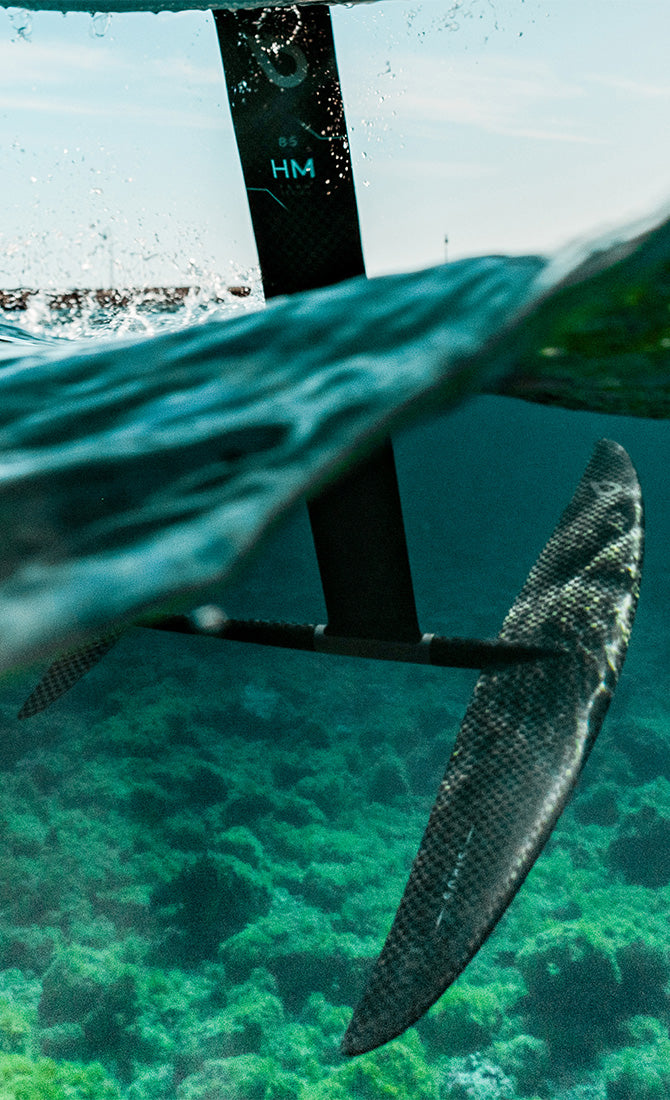Backloop / Backflip spin
Imitate the Wing Foil World Tour champions with the guidance of Malo Guénolé, who breaks down the Backloop / Backflip Spin in the finest details!
First introduced in competition at Leucate in 2023, the Backloop / Backflip Spin, also known as Palau, quickly became a staple on the circuit. Entered into the scorebook as BLSP / BFSP, cleanly executing this trick guarantees a base score of 5.10 for the rider. With added height or a grab, scores can even reach 7. A must-have in a competitor’s arsenal.
Essentially the Backloop / Backflip Spin is a maneuver where the body rotates a Backloop or Backflip, spinning independently of the wing, while the wing is held in one hand and doesn’t follow the body but rather stays off to the side. Many practitioners beyond the elite have also embraced this move because it is relatively accessible and fun to attempt. Follow Malo’s advice to join the Palau club: “The Backloop / Backflip Spin is, in my opinion, the trick that provides the best sensation when you do it. The floating feeling while rotating upside down is delightful. Moreover, it’s probably the trick where you’ll perform the simplest vertical rotation. Before we see how to do it, let’s clarify one point. The difference between a Backloop Spin and a Backflip Spin depends on the verticality of your rotation. You will generally start with backloops because they require less commitment than backflips. We’ll see later exactly how to differentiate them. So, let’s see how to do it without further delay!”
Ideal Conditions
“The Backloop / Backflip Spin is also a very good trick because it adapts to all types of conditions. Whether it’s light on a 5m or strong winds on a 3m, with any board or foil, the only mandatory condition for this trick is to have a boom. Moreover, it’s good to have some basic freestyle skills. You should be able to master Frontside 360s and backloops to have an idea of how to send your board in the right way. Don’t attempt it if you can’t do a railey yet; otherwise, you might be surprised by what could happen. I also recommend not attempting your first one in extreme conditions where you have no control. Ideally, be in 15/20 knots, comfortable with a 4.5m or 4m, and some small kickers. Now that you have your helmet on and the conditions are good, let’s move on to the technical part.”
Advance the Back Hand
“So you’re in the water, warmed up with a couple of 360s and backloops, and now you’re thinking of sending your first Backloop Spin. I say Backloop because at the beginning of your learning, there’s no need to put your head upside down radically. It’s better to take it step by step when learning a new trick.
You’ll start by placing both feet in the straps and sheeting in a bit for some speed. Again, there’s no need to go at Mach 12 for your first try. Just enough to have a good pop without forcing it. Once you’re well settled on your edge, this is where you’ll perform the little magic move that makes the trick work. You’ll need to advance your back hand to place it roughly in the middle of the boom in supination (palm facing up). Ideally, position your hand so that when you release your front hand, the wing doesn’t lose all its power but doesn’t rip your arm off either. On a GONG wing, this point is located in the middle of the GONG logo on the center strut. Also, don’t forget to put your hand in supination as it will help lift the wing upward and result in half a rotation less for your arm at the end of the rotation (you’ll understand why soon). Now that you’re in position, all you have to do is find the right section to send it, preferably a small kicker. This way, it will be easier to send the board upward and gain height without being too slow or too fast.”
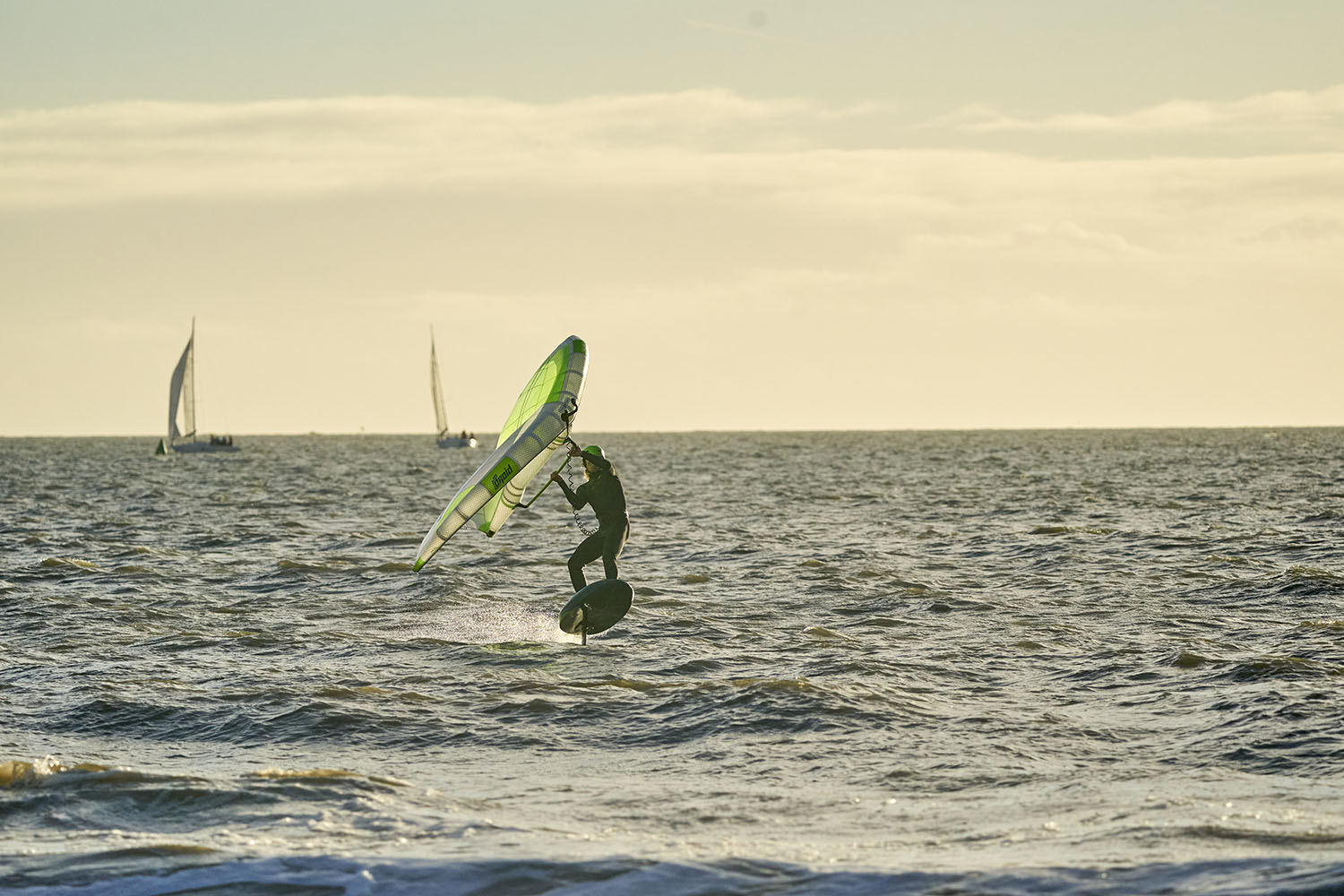
Find a Kicker and Send
“Once you’ve reached the kicker, it’s time. You’ll start by performing your pop. It should be like a backloop pop, meaning you put a lot of weight on the back when pushing and slightly point the nose of the board more into the wind.
By putting your weight on the back during the pop, you won’t need to rely solely on your abs to lift the board vertically. The leverage your body creates with your foil will send the board up directly after leaving the water. Moreover, pointing the nose into the wind will, once the board is in the air, align the hull with the wind, and you can slightly lean on it, guiding your rotation (especially true in strong winds).
While you’re popping, make sure to sheet in the wing well by pulling in your back arm, which will help you gain height. If everything has gone well, you should be leaving the water and initiating your ascent in the air.”Release the Front Hand
“Up to this point, you still had both hands on the boom. But now, we’re getting to the heart of the matter! So, you’re starting the ascent, and now you have to release your front hand. Before letting it go, make sure that the wing’s leading edge is pointing slightly upward; it will give you more lift. Once you release it, you may feel good tension in the back hand, but don’t worry; it’s normal. If you feel either no power at all or too much power, your hand is probably poorly positioned on the boom.
Now that you’ve let go of your front hand, you’ll open the front arm to take it behind you. Your hand should then point towards the water below you. At the same time, you’ll also throw your head and gaze over your shoulder to find your landing spot. These three movements must happen in sequence as soon as your foil exits the water. If you wait too long, you won’t benefit from the board’s inertia to turn, and it will be more challenging. So, make sure to chain all of this together.”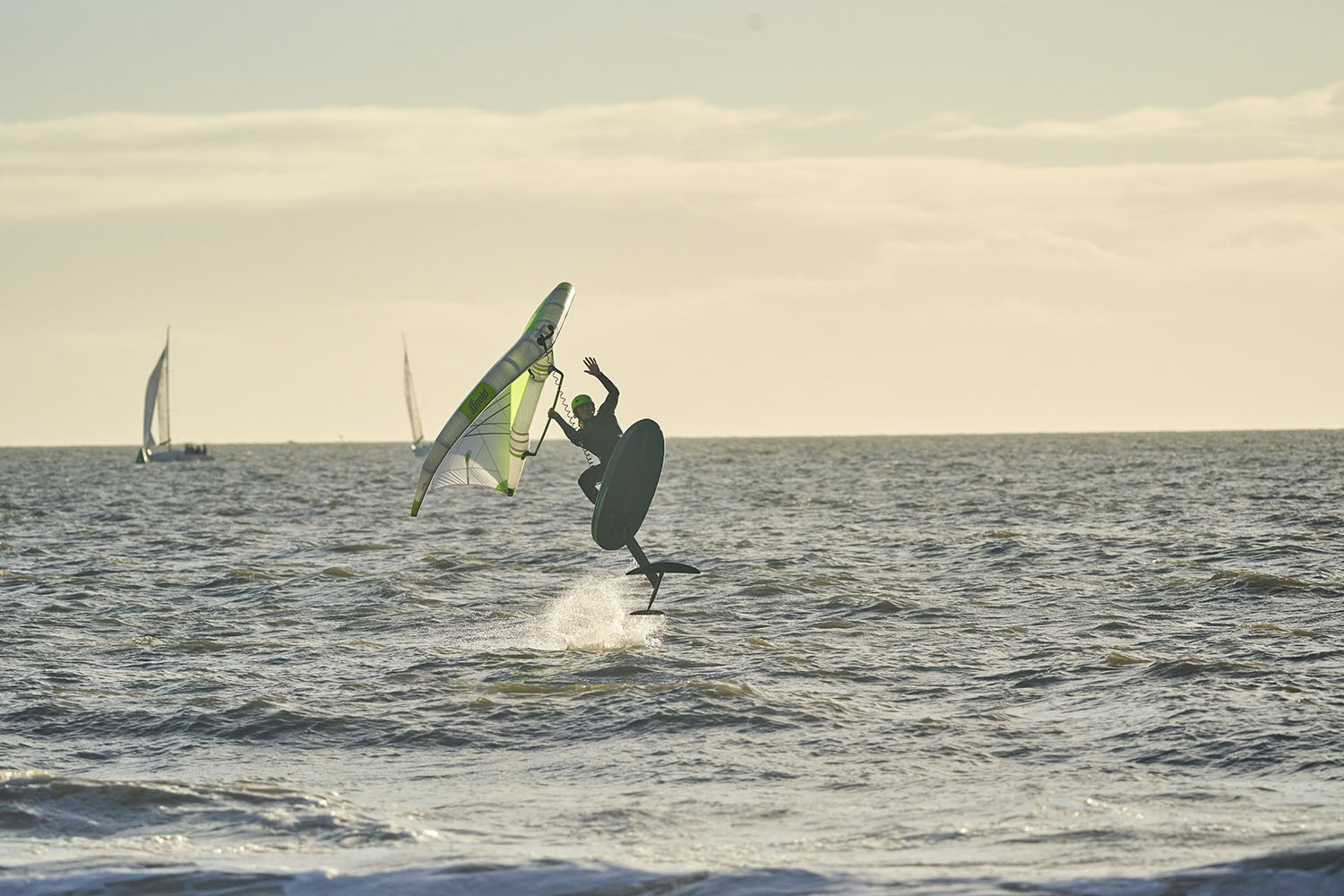
Manage the Gaze Rotation
“If everything has gone well, you should be gracefully rotating in the air. However, don’t enjoy the view for too long, as your first attempts may not necessarily reach dizzying heights 😉
Theoretically, the board should follow the same trajectory as a backloop, creating a loop around you, not entirely vertical to the water. The verticality will come later, depending on whether you throw your head over your shoulder or backward like a somersault. I still recommend starting without seeking too much verticality and taking it easy.
As the rotation progresses, the board will gradually pass from the windward side to the leeward side of you, eventually pointing the nose toward the water. During this time, keep your gaze over your shoulder until your body starts to straighten up. I can advise you to stay compact in the air during the rotation, rotate faster, and avoid getting off balance.”
Landing Depending on Your Takeoff
“Now, you should be nearing the end of your rotation, gradually approaching the water. At this point, your body is also supposed to finish its rotation and straighten up.
This is where a typical fall often occurs. It’s possible that you’ve completed your rotation before touching the water. In that case, the wing might rise above your head by extending your arm upward. It will then go neutral, facing the wind, and you won’t have any traction, making it challenging to stop your rotation. Most of the time, you’ll fall on your back and take a small splash, but generally nothing severe. To avoid this, I recommend sheeting in your wing well right from the beginning of the trick. By doing this, it will stay more easily powered in the wind because it will be in power throughout the rotation, and it won’t risk losing wind. And if you see that you’re rotating too much every time, just ease up on your pop by pushing less on the back of the board. This way, you’ll rotate more slowly. Being grouped here will also help you stay more easily above the board and not get carried away. Another mistake that can occur is trying to catch the wing too early with your front hand behind your back to reassure yourself (not being suspended by one hand upside down). Wait until you have completed the rotation to catch the wing with the front hand right where it should be, not behind the back hand. If you develop this reflex, it will be challenging to forget it. So, if you’re a little afraid, remind yourself that, in any case, you are still supported by the wing with one hand, and at worst, if you fall, it’s into the water. Now, if everything has gone well, you should be approaching the water with the back hand having completed a full turn. It may seem impossible at first, but this position lasts only a very short time. So let’s see how to manage that.” `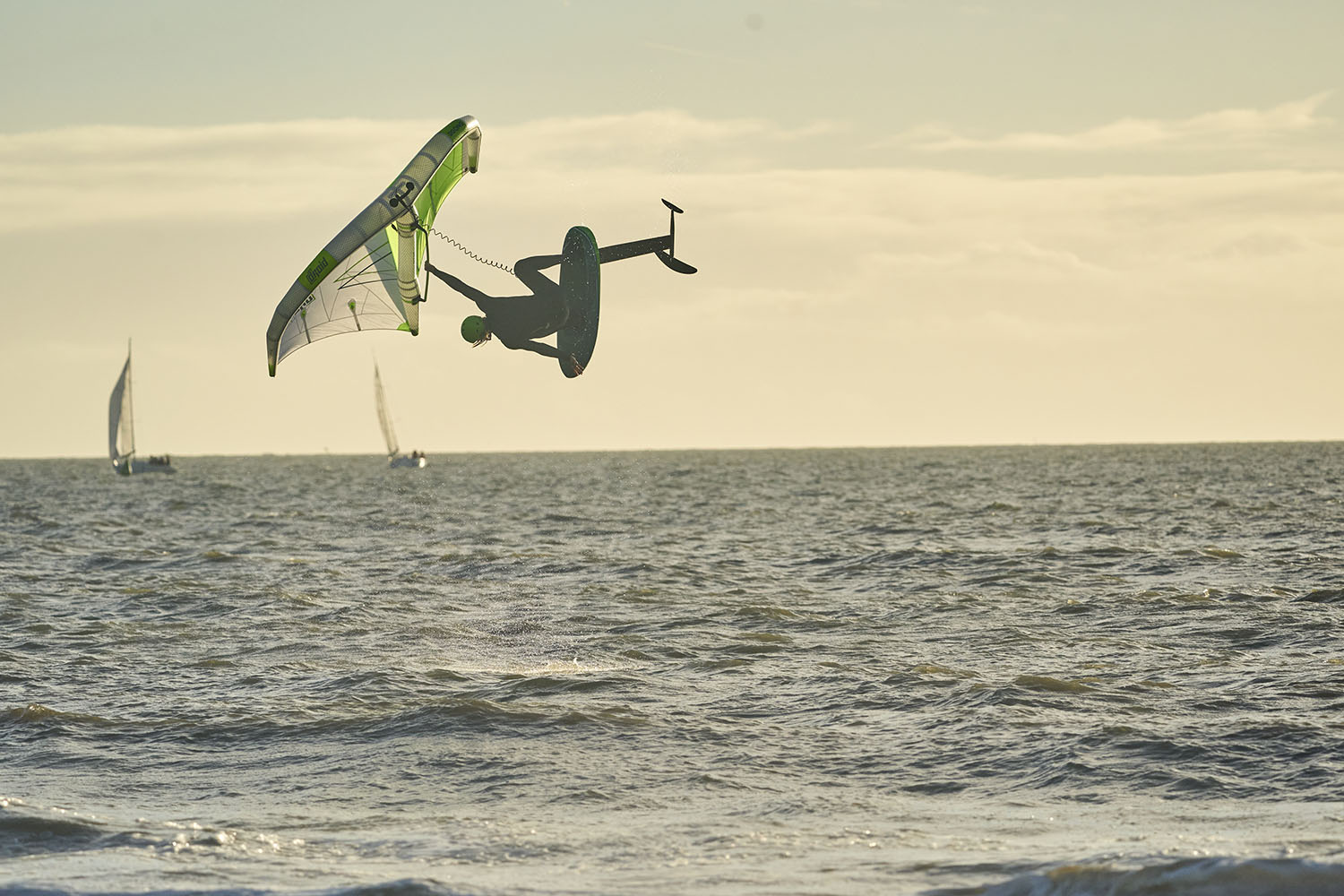
Regain Control of the Boom
“Now it’s time for landing. You may have gained quite a bit of speed in the air if you’re well-powered in your wing. So, don’t be surprised by that, but prepare for it by staying well above the board and cushioning as soon as the foil touches the water.
Once you land, you’ll need to switch your hands back to the normal position. This change can happen slightly just after the landing because the wing will still be powered, and it might make you fly again, depending on whether you land with speed or not and whether it’s a clean landing or not. But if you feel that you’re not in these conditions, then switch hands right after landing. To do this, you’ll catch the boom with your front hand, which until now was loose. Once you’ve caught the boom with the front hand, you’ll quickly release the back hand just long enough to untwist it to the normal position (palm facing up or down as you prefer). Also, take advantage of this movement to move your back hand backward to bring it back to the basic riding position.”Hand Switch During Rotation
“As you progress, you’ll probably want to switch hands while you’re in the air to land ready to ride away with a normal grip. To do this, you’ll make the same movement, but it will be much harder because all your weight will be pulling on the wing. So, releasing the back hand will be more complex. Here’s a tip: give a tug on the back hand so that when you release it, the wing loses its power for a short moment, giving you time to perform your hand switch. You’ll have to be quick to do this, but once you’ve gotten used to it, it shouldn’t be too much of a problem. Once this is done, all you have to do is sheet-in the wing and pump your foil to take off again, and you’ll have nailed your first Backloop Spin!”
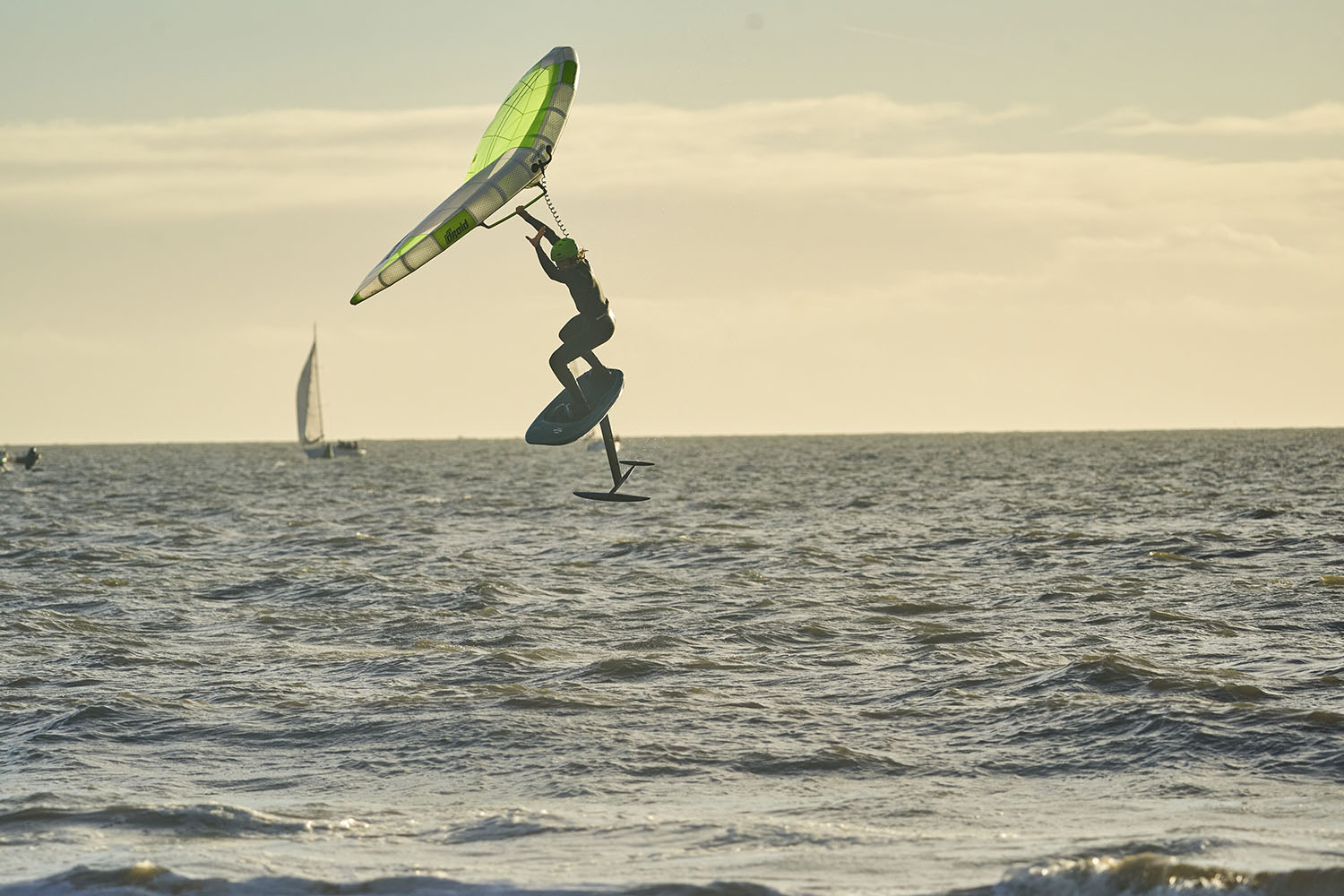
Little Tips for Success in Your Backflip Spin
“As you progress, you will likely get closer to the Backflip Spin than the Backloop. To do this, simply send your head more and more vertically until you really throw it behind you. Moreover, this trick can make you go very high if you learn to stall it well. You just need to go faster and hit the biggest kicker you can find. Also, make sure to edge the wing well and keep your front hand on the boom longer. The longer you keep it, the higher you’ll go. Also, remember to slow down the rotation as you go higher by sending the board more gently and using your abs more to keep it close to you.”
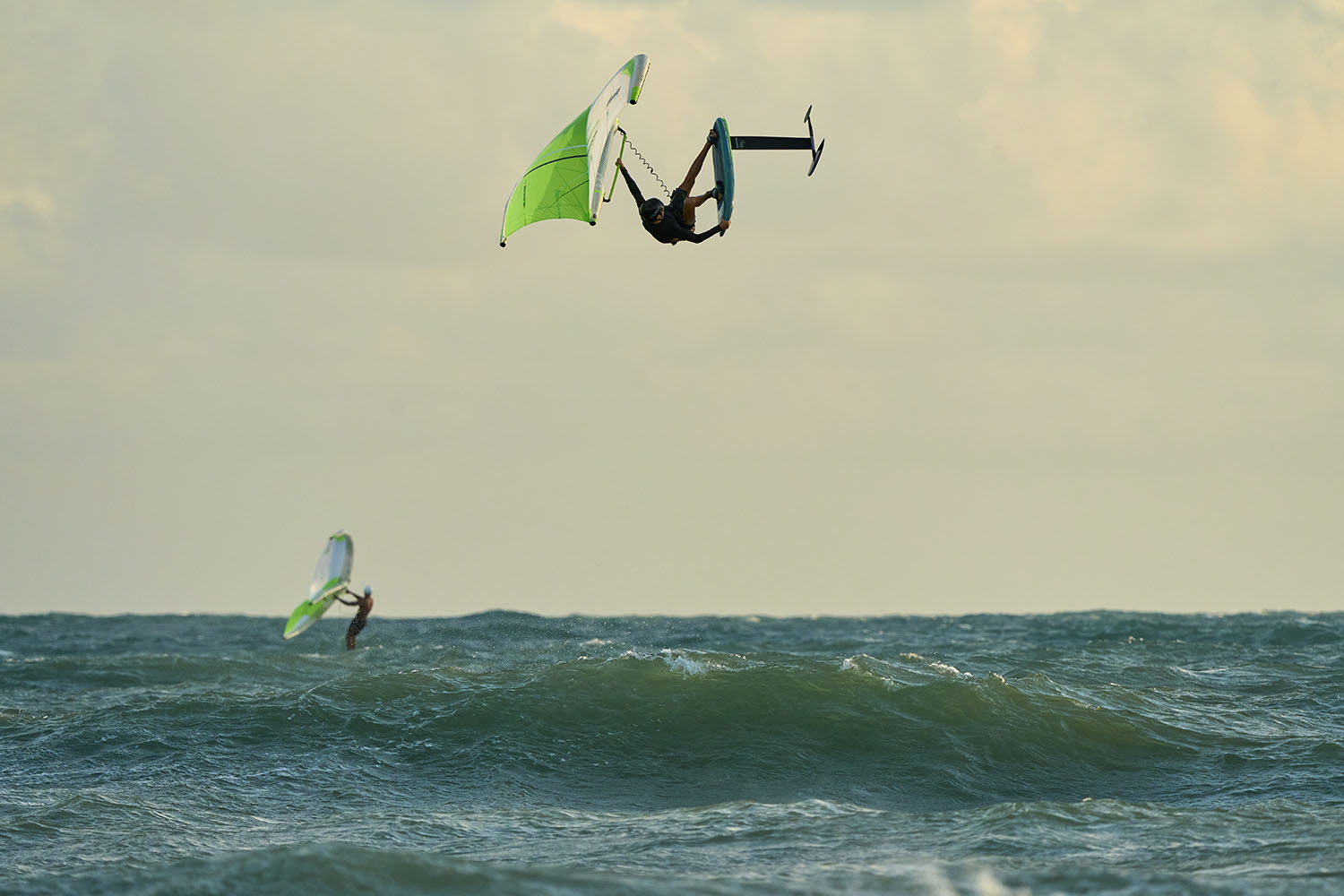
“The really cool thing about the Backloop/Backflip Spin is that you can add as many grabs as you want. You can take inspiration from the ones you do on your one-hand jumps and do the same with this trick. Doing that can give your move a very cool snowboard or wakeboard look without too much difficulty.
In short, the Backloop/Backflip Spin is a stylish trick that gives you a great sensation within reach of anyone who masters the basic wing tricks. So what are you waiting for? Grab your gear and head to the water to give it a try!”
Malo Guénolé.